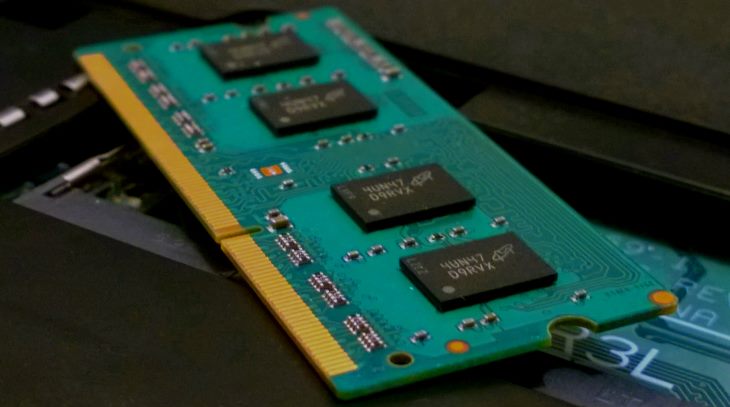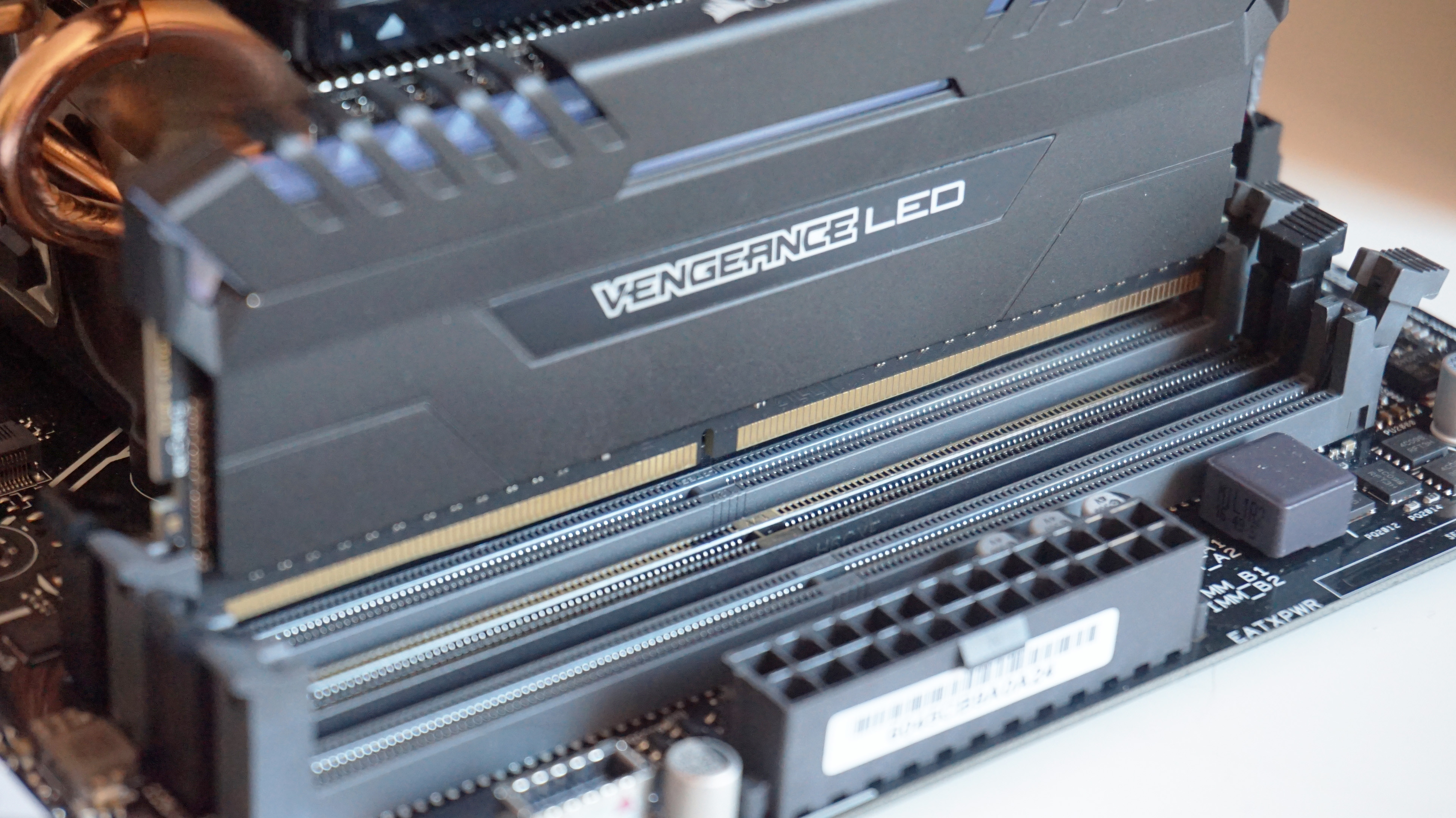How To Find How Many Ram Slots Are Used
- How To Find Out How Many Ram Slots Are Used Windows 7
- How To Find How Many Ram Slots Are Used Without
The total amount of memory, or RAM, a computer can have is dependent on the motherboard installed in the computer and the operating system. In general, most motherboards will support either two or four memory modules, but the type and amount of memory can differ widely from one motherboard to the next.
RAM slot, socket, or a memory slot is a gap on your computer’s motherboard where you can insert your RAM. Depending on the motherboard type, there might be up to four memory sockets. If you have a high-tier motherboard, you can even have more. Check how many sockets you have for RAM. Your motherboard has a limit to the number of RAM sticks you can install. Some motherboards support only two, while others support four, six, or even more. Most motherboards have a limit to the amount of memory that they support, regardless of the number of slots. Check your used and available RAM. You'll find the currently used RAM in the bottom-left corner of the screen, while your Android's total available RAM (e.g., RAM not reserved for use by the system) is in the bottom-right corner.
TipIf you are trying to find memory specifications for upgrading your computer memory, see: What type of computer memory to use in a memory upgrade?
NoteIf you are not sure what operating system you have, see: How to find what operating system is on a computer.
Microsoft Windows computers
How much ram your computer can hold depends on if you're running a 32 or 64-bit version of Windows, which depends on your CPU. The capacities are as follows, permitting you have the physical space to fit the RAM modules.
- 32-bit systems - up to 4 GB
- 64-bit systems - up to 128 GB
How to find out if you have a 32-bit or 64-bit version of Windows
- Press the Windows key and the Pause/Break key at the same time.
- A new window should appear that says System at the top, similar to the one below.
- Under the System section, next to System type:, you can see if your version of Windows is 32-bit or 64-bit.
Once you know the type of memory and the total amount of memory the computer supports, you can increase the amount of memory by installing additional sticks of RAM. You can also replace existing sticks of RAM with ones having a higher amount of memory.

Apple macOS computers
- Click the Apple icon in the upper-left corner to open the Apple menu.
- In the drop-down menu that appears, select About This Mac.
- You should see a window open that is similar to the one below.
- Visit Apple's page for a table containing the max RAM for each machine, based on the information in the iMac section in the above window.
Once you know the type of memory and the total amount of memory the computer supports, you can increase the amount of memory by installing additional sticks of RAM. You can also replace existing sticks of RAM with ones having a higher amount of memory.
Linux and Unix-based computers
Similar to a Windows-based computer, Linux-based machines' maximum RAM is based on whether they have 32-bit or 64-bit architecture. Most 32-bit Linux systems only support 4 GB of RAM, unless the PAE kernel is enabled, which allows a 64 GB max. However, 64-bit variants support between 1 and 256 TB.
To determine how much ram your Linux-based computer supports, open the Terminal (Ctrl+Alt+T) and type in the following command:

Look for the Maximum Capacity section to see the limit on RAM.
Once you know the type of memory and the total amount of memory the computer supports, you can increase the amount of memory by installing additional sticks of RAM. You can also replace existing sticks of RAM with ones having a higher amount of memory.
Additional information
- See the RAM and memory definition for further information about each of these terms and related links.
How to identify computer ram ddr1 ddr2 ddr3, DDR4 Identifying the Computer RAM (Random Access Memory) like DDR1, DDR2, DDR3, and DDR4 physically is not so hard if you follow the steps.
- Distance of Notch
- Integrated Chip (IC) type
DDR1, DDR2, DDR3, DDR4 is the most using RAM currently in the market.

First of all confirm is it DDR1, DDR2, DDR3, or Different DDR’s SDRAM. keep your DDR chip front-facing as given bellow. here look to the notch each DDR notch distance is different from others DDR. It’s mentioned in the picture.
Also Read :
Distance of Notch
- Notch Means above cuts Mark on RAM
- DDR1, DDR2, DDR3 having Single Cut mark on the base of the RAM
- But you can see the Cut mark (Notch) distance (see below photo)
- Notch of DDR1 and DDR2 are similar but if you see closely,
- You can find DDR1 Notch is just above the IC and DDR
- DDR2 Notch is just far to the IC
- Notch of DDR3 is different from the other two.
- Notch of DDR1 and DDR2 are similar but if you see closely,
- Notch Means above cuts Mark on RAM
Integrated Chip (IC)
- See the Above Photo
- DDR3 having small and square type IC.
- DDR2 is just bigger then DDR3 and smaller the DDR1,
- In this case, too, DDR1 and DDR2 are just a small difference
- IC in DDR1 are touched both top and bottom of RAM
- and IC in DDR2 is just center of the RAM
- See the Above Photo

How To Find Out How Many Ram Slots Are Used Windows 7
Number of Pins in DDR1, DDR2, DDR3, DDR4
- DDR1 – 184 Pins
- DDR2 – 240 Pins
- DDR3 – 240 Pins
- DDR4 – 288 Pins
- DDR3 – 240 Pins
- DDR2 – 240 Pins
- DDR1 – 184 Pins
Voltage of RAM
- The voltage of RAM cannot be used for the Physical finding of RAM, but it can be used to place the RAM in the Motherboard Slot. (voltage are written in the RAM Slot of Motherboard)
- DDR1 Volts – 2.5 v
- DDR 2 Volts – 1.8 v
- DDR3 Volts – 1.5 v
- DDR4 Volts – 1.2v
- DDR3 Volts – 1.5 v
- DDR 2 Volts – 1.8 v
- DDR1 Volts – 2.5 v
- The voltage of RAM cannot be used for the Physical finding of RAM, but it can be used to place the RAM in the Motherboard Slot. (voltage are written in the RAM Slot of Motherboard)
- Click to Buy Best DDR RAMs for Desktops
How To Find How Many Ram Slots Are Used Without
- Click to Buy Best DDR RAMs for Desktops